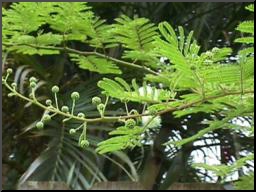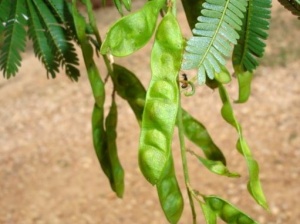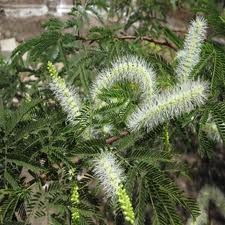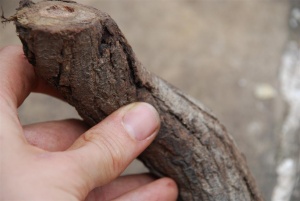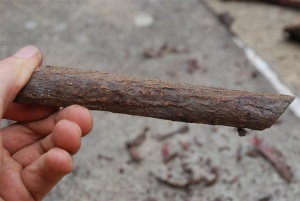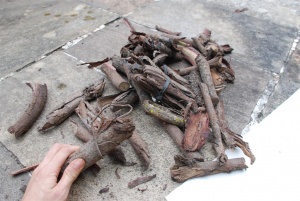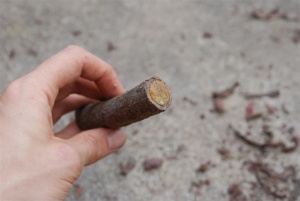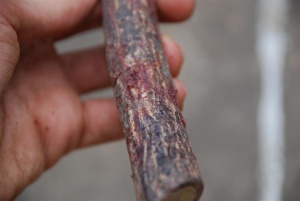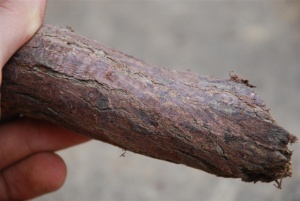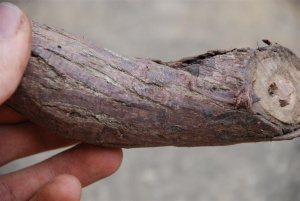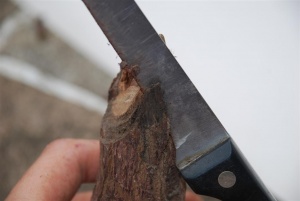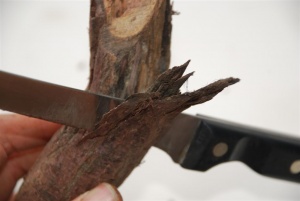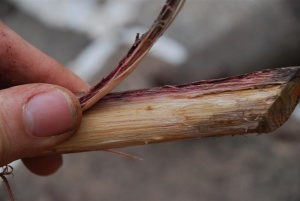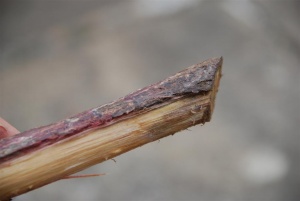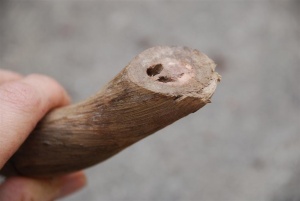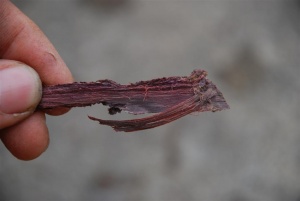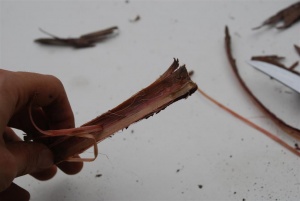Difference between revisions of "Category:DMT"
Endlessness (Talk | contribs) |
Endlessness (Talk | contribs) |
||
| Line 85: | Line 85: | ||
The following is a list of plants known to contain tryptamines. | The following is a list of plants known to contain tryptamines. | ||
| + | |||
| + | {{:Mimosa hostilis}} | ||
=== Acacia === | === Acacia === | ||
| − | + | [[Acacia_acuminata]] | |
| − | + | [[Acacia_alpina]] | |
| − | + | [[Acacia angustifolia]] | |
| − | + | [[Acacia angustissima]] | |
| − | + | [[Acacia auriculiformis]] | |
| − | + | [[Acacia baileyana]] | |
| − | + | [[Acacia berlandieri]] | |
| − | + | [[Acacia catechu]] | |
| − | + | [[Acacia caven]] | |
| − | + | [[Acacia colei]] | |
| − | + | [[Acacia complanata]] | |
| − | + | [[Acacia constricta]] | |
| − | + | [[Acacia confusa]] | |
| − | + | [[Acacia cornigera]] | |
| − | + | [[Acacia cultriformis]] | |
| − | + | [[Acacia farnesiana]] | |
| − | + | [[Acacia filiciana]] | |
| − | + | [[Acacia_floribunda]] | |
| − | + | [[Acacia laeta]] | |
| − | + | ||
| − | + | ||
| − | + | ||
| − | + | ||
| − | + | ||
| − | + | ||
| − | + | ||
| − | + | ||
| − | + | ||
| − | + | ||
| − | + | ||
| − | + | ||
| − | + | ||
| − | + | ||
| − | + | ||
| − | + | ||
| − | + | ||
| − | + | ||
| − | + | ||
| − | + | ||
| − | + | ||
| − | + | ||
| − | + | ||
| − | + | ||
| − | + | ||
| − | + | ||
| − | + | ||
| − | + | ||
| − | + | ||
| − | + | ||
| − | + | ||
| − | + | ||
| − | + | ||
| − | + | ||
| − | + | ||
| − | + | ||
* DMT in the leaf (Trout's Notes) | * DMT in the leaf (Trout's Notes) | ||
| − | |||
| − | |||
| − | |||
| − | |||
| − | |||
| − | + | [[Acacia longifolia]] | |
* 0.2% tryptamine in bark, leaves, some in flowers, phenylethylamine in flowers (Hegnauer 1994) | * 0.2% tryptamine in bark, leaves, some in flowers, phenylethylamine in flowers (Hegnauer 1994) | ||
* DMT in plant (Lyceaum) | * DMT in plant (Lyceaum) | ||
| − | |||
| − | + | [[Acacia maidenii]] | |
| − | + | ||
| − | + | ||
| − | + | ||
| − | + | ||
* Bark of A. maidenii contains 0.6% of N-methyltryptamine and DMT in the proportions approx. 2:3 (Fitzgerald & Sioumis 1965) | * Bark of A. maidenii contains 0.6% of N-methyltryptamine and DMT in the proportions approx. 2:3 (Fitzgerald & Sioumis 1965) | ||
| − | |||
| − | + | [[Acacia melanoxylon]] | |
| − | * | + | * DMT in the bark and leaf, less than 0.02% total alkaloids (Hegnauer 1994) |
| − | + | ||
| − | |||
| − | |||
| − | |||
| − | + | [[Acacia mellifera]] | |
* DMT in the leaf (Trout's Notes) | * DMT in the leaf (Trout's Notes) | ||
| − | |||
| − | + | [[Acacia nilotica]] | |
* DMT in the leaf (Trout's Notes) | * DMT in the leaf (Trout's Notes) | ||
| − | |||
| − | + | [[Acacia obtusifolia]] | |
* 0.4 to 0.5 % DMT/NMT in the dried bark (Csiro 1990) | * 0.4 to 0.5 % DMT/NMT in the dried bark (Csiro 1990) | ||
*0.15-0.6% DMT,NMT(2:1)plus trace betacarboline in bark, 0.06-0.2% leaves (Southern Cross University comissioned test 2001) | *0.15-0.6% DMT,NMT(2:1)plus trace betacarboline in bark, 0.06-0.2% leaves (Southern Cross University comissioned test 2001) | ||
*5-MeoDMT & bufotenine in some loctations (E., Entheogen Review 1995-6; Trout's Notes 2005-10) Is not fast growing in the wild and is under threat of serious overharvesting. Is NOT considered a weed as previously stated here, and will become rarer if wild seed populations exploited further.(Nen, original bioassay subject) | *5-MeoDMT & bufotenine in some loctations (E., Entheogen Review 1995-6; Trout's Notes 2005-10) Is not fast growing in the wild and is under threat of serious overharvesting. Is NOT considered a weed as previously stated here, and will become rarer if wild seed populations exploited further.(Nen, original bioassay subject) | ||
| − | + | ||
| + | [[Acacia oerfota]] | ||
* Less than 0.1% DMT in leaf (Ott) | * Less than 0.1% DMT in leaf (Ott) | ||
| − | |||
| − | |||
| − | |||
| − | |||
| − | + | [[Acacia phlebophylla]] | |
* 0.3% DMT in leaf, NMT (Trout's Notes) | * 0.3% DMT in leaf, NMT (Trout's Notes) | ||
| − | |||
| − | + | [[Acacia podalyriaefolia]] | |
| − | + | ||
| − | + | ||
| − | + | ||
| − | + | ||
* Tryptamine in the leaf (Trout's Notes) | * Tryptamine in the leaf (Trout's Notes) | ||
* 0.5% to 2% DMT in fresh bark, phenethylamine trace amounts (Hegnauer 1994) | * 0.5% to 2% DMT in fresh bark, phenethylamine trace amounts (Hegnauer 1994) | ||
| − | |||
| − | + | [[Acacia polyacantha]] | |
* DMT in leaf (Trout's Notes) | * DMT in leaf (Trout's Notes) | ||
| − | |||
| − | + | [[Acacia retinodes]] | |
| − | + | ||
| − | + | ||
| − | + | ||
| − | + | ||
* DMT and MMT (www.factorey.ch/Eins.htm) | * DMT and MMT (www.factorey.ch/Eins.htm) | ||
* Less than 0.02% total alkaloids found (Hegnauer 1994) | * Less than 0.02% total alkaloids found (Hegnauer 1994) | ||
| − | |||
| − | + | [[Acacia rigidula]] | |
| − | + | ||
| − | + | ||
| − | + | ||
| − | + | ||
* DMT, NMT, tryptamine, amphetamines, mescaline, nicotine and others (Phytochem. 199 | * DMT, NMT, tryptamine, amphetamines, mescaline, nicotine and others (Phytochem. 199 | ||
| − | |||
| − | + | [[Acacia senegal]] | |
| − | * | + | * DMT, in the leaf |
| − | + | ||
| − | |||
| − | |||
| − | |||
| − | + | [[Acacia simplex]] | |
| − | + | ||
| − | + | ||
| − | + | ||
| − | + | ||
| − | + | ||
| − | + | ||
| − | + | ||
| − | + | ||
| − | + | ||
| − | + | ||
| − | + | ||
| − | + | ||
*DMT and NMT, in the leaf, stem and trunk bark, 0.81% DMT in bark, MMT | *DMT and NMT, in the leaf, stem and trunk bark, 0.81% DMT in bark, MMT | ||
| − | |||
| − | |||
| − | |||
| − | |||
| − | + | [[Acacia tortilis]] | |
| − | + | ||
| − | + | ||
| − | + | ||
| − | + | ||
* DMT, NMT, and other tryptamines | * DMT, NMT, and other tryptamines | ||
| − | |||
| − | + | [[Acacia sieberiana]] | |
* DMT in the leaf (Trout's Notes) | * DMT in the leaf (Trout's Notes) | ||
| − | |||
| − | |||
| − | |||
| − | |||
| − | |||
| − | |||
| − | |||
| − | |||
| − | |||
=== Anadenanthera === | === Anadenanthera === | ||
Revision as of 18:46, 4 November 2011
http://wiki.dmt-nexus.me/Category:Alkaloids
Contents
- 1 Brief overview - What is DMT?
- 2 Chemical and physical properties
- 3 Effects
- 4 Pharmacology, toxicity and general safety
- 5 Plants containing DMT
- 6 General Plant Info
- 7 Identification
- 8 Alkaloid content
- 9 Extraction teks
- 10 Cultivation
- 11 Refinery for the Purpose of Extraction
- 12 References
- 13 Links
- 14 Extraction Teks
- 15 Dosages and consumption methods
- 16 History of usage
- 17 Scientific publications
- 18 Links of interest
Brief overview - What is DMT?
NN-Dimethyltryptamine or DMT for short is an short acting psychedelic entheogen which allows a persons consciousness to voyage into the most incredible dimensions, visions, thoughts and experiences imaginable.
It is without doubt one of the most powerful yet mysterious psychedelics in existence but to classify DMT as merely a drug would be doing it a great injustice as DMT is more a trans dimensional key into places and vistas so profound and awe inspiring that it raises many new questions regarding the nature of reality and our place within it.
DMT exists naturally in every human being and also throughout the plant and animal kingdoms. It occurs naturally in many mammals, marine animals, trees, grasses, flowers and shoots.
DMT is closely related to serotonin, the naturally occurring neurotransmitter that psychedelics affect so widely. The pharmacology of DMT is similar to that of other well-known psychedelics. It affects receptor sites for serotonin in much the same way that LSD, psilocybin, and mescaline do. These serotonin receptors are widespread throughout the body and can be found in blood vessels, muscle, glands, and skin.
There are a number of ways to acquire this entheogen. The first and most difficult way is to have some substantial chemistry knowledge and experience and actually synthesize pure DMT in a laboratory. This a rather tricky and time consuming process and requires access to some rather obscure and hard to acquire chemicals.
The most common and easiest method to acquire DMT is to extract it from the various plant species that contain the compound. The various plants and extraction techniques can be found on this wiki at the extraction teks.
Chemical and physical properties
DMT = N,N-Dimethyltryptamine
Freebase DMT
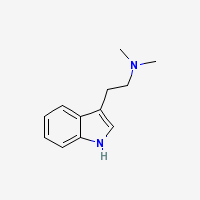 |
- Appearance: White/Transparent crystals
- CAS Registry Number: 61-50-7
- Composition: C12H16N2
- Molecular Weight: 188.26884 g/mol
- Melting point: 44-68°C (Conflicting reports in literature, as mentioned in TIHKAL)
- Boiling point: Theoretically 360-380°C
- XLogP: 2.0
- XLogP3: 2.5 (PubChem)
- pKa: 8.68 (Merck Index)
- Colorimetric reagent results: Here
- Stability/Degradation: Oxidation to DMT N-Oxide (yellow oil) in extended presence of oxygen (specialy in evaporation of dmt-containing solvents with heat and/or fan or generally in prolonged exposure to open air). N-oxide may be reverted back to the parent compound by reduction, as described in the N-Oxide to Freebase Wiki.
- Solubility:
Very Soluble in Xylene, Toluene, Limonene, acetone, Isopropyl Alcohol (IPA), methanol, ethanol, Dichloromethane (DCM), chloroform, ether, Butanone (also known as methyl ethyl ketone (MEK)) and butanol.
Soluble in naphtha, hexane, heptane but almost insoluble in these solvents at freezing temperatures
Almost insoluble in water.
DMT N-Oxide
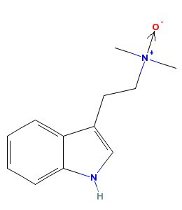 |
- Appearance: Yellow oil
- XLogP3: 2
- Colorimetric reagent results: Here
- Solubility:
Soluble in Xylene, Toluene, Limonene
Slightly soluble in basic water
Insoluble in naphtha
DMT Fumarate
- Molecular Weight: 492.608 g/mol
- Solubility:
Very soluble in water
Soluble in methanol (~10mg/ml)
Soluble in boiling IPA, Practically insoluble in room temp IPA (~1mg/ml), Insoluble in freeze-cold IPA.
Slightly soluble in ethanol (~5mg/ml)
Insoluble in cold acetone
Insoluble in FASI (Fumaric Acid Saturated IPA)
Insoluble in FASA (Fumaric Acid Saturated Acetone)
Effects
Depending on the dosage, the effects of DMT can range from a multitude of sensations, from bizarre, beautiful and even 'impossible' visions to literally jaw hanging awe as one is propelled into other dimensions of existence where human language and logic cannot even begin to describe or comprehend.
There have been a few attempts to define different levels and types of experience. Psychedelic Monographs and Essays[1] discusses different levels of a DMT experience.
The Hyperspace Lexicon project is an attempt to create a new vocabulary to try to describe the DMT realm
Pharmacology, toxicity and general safety
For info on DMT safety, please reffer to Health and Safety section
Plants containing DMT
The following is a list of plants known to contain tryptamines.
General Plant Info
Mimosa hostilis is the former scientific name for Mimosa tenuiflora, and the two names are synonymous [2][3]. The older name is still widely know due to its presence in the literature and as distributers of botanical products still use the older term. M. tenuiflora is an entheogen known as Jurema, Jurema Preta, Black Jurema, and Vinho de Jurema. Dried Mexican Mimosa Hostilis root bark has been recently shown to have a DMT content of about 1%. The stem bark has about 0.03% DMT.
To date no β-carbolines such as harmala alkaloids have been detected in Mimosa tenuiflora decoctions, however the isolation of a new compound called "Yuremamine" from Mimosa tenuiflora as reported in 2005 represents a new class of phyto-indoles [4]. This may explain the reported oral activity of DMT in Jurema without the addition of an MAOI. Imported MHRB typically requires the addition of an MAOI in the preparation of ayahuasca.
Identification
Alkaloid content
- Root Bark contains DMT - 0.31% to 0.57% (Schultes 1977)
- Inner root bark contains up to 2% active alkaloids (Extractions from DMT-Nexus and others)
- 3% of the total alkaloids (or 0.04% of rootbark) is NMT and 2-Methyl-1,2,3,4-Tetrahydro-Beta-Carboline (Analysis of jungle spice, Analysis of red/yellow/white spices
Extraction teks
For extracting DMT , any of the extraction teks described here will work.
Yuremamine is sensitive to heat and pH changes so only cold water (or alcoholic) soak will retrieve it.
Cultivation
Growing: Mimosas aren´t cold proof. For outdoor growing they deserve a sunny place with leachy middle nutrient soil. Throughout the vegetation are copiously watered, in winter the watering is tied down on to the minimum. They are breeding with the seeds, but can be breeded with the cutting also.
Refinery for the Purpose of Extraction
Mimosa Hostilis Root Bark can be acquired in different stages of preparation. Usually it is sold as whole, shredded or pre-powdered root-bark, but one may have access to the whole root—usually when harvested directly.
- The whole root must cleaned and stripped of its inner root-bark while discarding the rest of the root.
- The whole root-bark must generally be torn by hand, cut, or smashed with a blunt object prior to shredding.
- The shredded should be further broken down as much as possible by peeling/cutting/blending to increase surface area for alkaloids to be extracted.
- The pre-powdered can always be used "as-is".
Below details how to break it from whole root
The Root
| Note: | Only the Inner Root Bark is necessary for extraction, the core and outer parts are to be discarded! |
| Root preparation | ||||
|---|---|---|---|---|
|
Pictured below is its original after being harvested from the plant. Notice the middle core is quite distinct from the root-bark, the outer bark is much more brown: |
Cleaning the root
Peeling the Inner Root Bark
| Peeling the Inner Root Bark | |||||
|---|---|---|---|---|---|
|
Once the outermost part has been removed, peel off the Inner Root Bark to separate it from the core. This can easily be accomplished immediately by hand, though the use of a knife may be helpful. Here's the inner core which is to be discarded: |
Result of root preparation
| Result of root preparation | ||
|---|---|---|
|
The peeled inner root-bark now needs to dry. This may be accomplished by simply leaving it in the sun. Here's how it should look: |
Breaking the rootbark up
| Breaking the rootbark up | |
|---|---|
|
The pieces/strips of inner root-bark require further refinery to expose a larger surface area and increase the availability of the alkaloids for extraction. If storage is desired, then the whole pieces are preferable, as the alkaloids are less exposed and thus better protected. First strip the pieces further into thinner layers with the hands, then cut it up with good scissors into smaller squares, then break it down in small amounts and short/medium bursts with a blender or coffee grinder (to prevent breaking of blender/grinder) |
References
- ↑ Psychedelic Monographs and Essays [1]
- ↑ USDA, ARS, National Genetic Resources Program. Germplasm Resources Information Network - (GRIN) [Online Database]. National Germplasm Resources Laboratory, Beltsville, Maryland. URL: http://www.ars-grin.gov/cgi-bin/npgs/html/taxon.pl?24430
- ↑ Lewis, G.P. (1987) Royal Botanic Gardens, Kew 369 pp Legumes of Bahia.
- ↑ Vepsäläinen, Jouko J.; Auriola, Seppo; Tukiainen, Mikko; Ropponen, Nina & Callaway, J.C. (2005). "Isolation and characterization of yuremamine, a new phytoindole". Planta Medica, 71: 1053-1057. URL: http://www.ncbi.nlm.nih.gov/pubmed/16320208
Links
Acacia
- DMT in the leaf (Trout's Notes)
- 0.2% tryptamine in bark, leaves, some in flowers, phenylethylamine in flowers (Hegnauer 1994)
- DMT in plant (Lyceaum)
- Bark of A. maidenii contains 0.6% of N-methyltryptamine and DMT in the proportions approx. 2:3 (Fitzgerald & Sioumis 1965)
- DMT in the bark and leaf, less than 0.02% total alkaloids (Hegnauer 1994)
- DMT in the leaf (Trout's Notes)
- DMT in the leaf (Trout's Notes)
- 0.4 to 0.5 % DMT/NMT in the dried bark (Csiro 1990)
- 0.15-0.6% DMT,NMT(2:1)plus trace betacarboline in bark, 0.06-0.2% leaves (Southern Cross University comissioned test 2001)
- 5-MeoDMT & bufotenine in some loctations (E., Entheogen Review 1995-6; Trout's Notes 2005-10) Is not fast growing in the wild and is under threat of serious overharvesting. Is NOT considered a weed as previously stated here, and will become rarer if wild seed populations exploited further.(Nen, original bioassay subject)
- Less than 0.1% DMT in leaf (Ott)
- 0.3% DMT in leaf, NMT (Trout's Notes)
- Tryptamine in the leaf (Trout's Notes)
- 0.5% to 2% DMT in fresh bark, phenethylamine trace amounts (Hegnauer 1994)
- DMT in leaf (Trout's Notes)
- DMT and MMT (www.factorey.ch/Eins.htm)
- Less than 0.02% total alkaloids found (Hegnauer 1994)
- DMT, NMT, tryptamine, amphetamines, mescaline, nicotine and others (Phytochem. 199
- DMT, in the leaf
- DMT and NMT, in the leaf, stem and trunk bark, 0.81% DMT in bark, MMT
- DMT, NMT, and other tryptamines
- DMT in the leaf (Trout's Notes)
Anadenanthera
| Anadenanthera colubrina |
|
|---|---|
|
| Anadenanthera macrocarpa |
|
|---|---|
|
| Anadenanthera peregrina |
|
|---|---|
| Tryptamines known to be present in A. peregrina [1] Bufotenine (seeds)Bufotenine N-oxide (seeds)N,N-Dimethyltryptamine N-oxide (seeds)N,N-Dimethyltryptamine (bark)(pods)(seeds)5-Methoxy-N-methyltryptamine (bark)O-Methylbufotenine (bark) (seeds)N-Methyltryptamine (bark) |
Common Reed
| Arundo donax |
|
|---|---|
| Entire Plant contains 5-MeO-DMT (Shulgin, TIHKAL)Flowers contain DMT, 5-MeO-DMT, and 5-MeO-NMT (Shulgin, TIHKAL)Roots contain DMT, 5-MeO-DMT, 5-MeO-NMT, Bufotenine, bufotenidine, dehydrobufotenidine (Shulgin, TIHKAL) |
| Desmanthus illinoensis |
|
|---|---|
| Root contains DMT - 0.200% (Ott)Root Bark contains DMT - 0.340% (Ott) |
| Phalaris arundinacea (Reed Canary Grass) |
|
|---|---|
| Leaves contain DMT, 5-MeO-DMT, and related compounds (Smith 1977) 0.0004-0.121% Total Alkaloids (Dried) Lycaeum (DMT, Life and the Universe) |
| Phalaris tuberosa |
|
|---|---|
| Leaves and seedlings contain DMT, 5-MeO-DMT, and related compounds (Smith 1977)DMT - 0.100% (erowid)5-MeO-DMT - 0.022% (erowid)5-OH-DMT - 0.005% (erowid) |
| Phragmites australis (Common Reed) |
|
|---|---|
| DMT in roots (Ott) |
Delosperma
| Delosperma acuminatum |
|
|---|---|
| DMT, 5-MEO-DMT (Trout's Notes) |
| Delosperma cooperi |
|
|---|---|
| DMT, 5-MEO-DMT (Trout's Notes) |
| Delosperma ecklonis |
|
|---|---|
| DMT (Trout's Notes) |
| Delosperma esterhuyseniae |
|
|---|---|
| DMT (Trout's Notes) |
| Delosperma hallii |
|
|---|---|
| 5-MEO-DMT (Trout's Notes) |
| Delosperma harazianum |
|
|---|---|
| DMT, 5-MEO-DMT (Trout's Notes) |
| Delosperma hirtum |
|
|---|---|
| DMT (Trout's Notes) |
| Delosperma lydenbergense |
|
|---|---|
| DMT, 5-MEO-DMT (Trout's Notes) |
| Delosperma nubigenum |
|
|---|---|
| 5-MEO-DMT (Trout's Notes) |
| Delosperma pageanum |
|
|---|---|
| DMT, 5-MEO-DMT (Trout's Notes) |
| Delosperma pergamentaceum |
|
|---|---|
| Traces of DMT (Trout's Notes) |
| Delosperma tradescantioides |
|
|---|---|
| DMT (Trout's Notes) |
Desmodium
| Desmodium caudatum |
|
|---|---|
|
| Desmodium gangeticum |
|
|---|---|
|
| Desmodium gyrans |
|
|---|---|
|
| Desmodium pulchellum |
|
|---|---|
|
| Desmodium racemosum |
|
|---|---|
|
| Desmodium triflorum |
|
|---|---|
|
| Lespedeza bicolor |
|
|---|---|
var. japonica
|
Petalostylis
| Petalostylis cassioides |
|
|---|---|
| 0.4-0.5% tryptamine, DMT, etc. in leaves and stems (Johns et al 1966) |
Mimosa
| Mimosa ophthalmocentra (Red Jurema
) |
|
|---|---|
|
1,6% DMT in the inner rootbark [2] |
| Mimosa scabrella |
|
|---|---|
|
| Mimosa verrucosa |
|
|---|---|
|
| Mucuna pruriens |
|
|---|---|
|
| Petalostylis labicheoides |
|
|---|---|
var. casseoides
|
| Diplopterys cabrerana (Chaliponga
) |
|
|---|---|
|
| Horsfieldia superba |
|
|---|---|
|
| Iryanthera ulei |
|
|---|---|
|
| Osteophloem platyspermum |
|
|---|---|
|
Virola
| Virola calophylla |
|
|---|---|
|
| Virola carinata |
|
|---|---|
|
| Virola divergens |
|
|---|---|
|
| Virola elongata |
|
|---|---|
|
| Virola melinonii |
|
|---|---|
|
| Virola multinervia |
|
|---|---|
|
| Virola pavonis |
|
|---|---|
|
| Virola peruviana |
|
|---|---|
|
| Virola rufuta |
|
|---|---|
|
| Virola sebifera |
|
|---|---|
|
| Virola theiodora |
|
|---|---|
|
| Virola venosa |
|
|---|---|
|
| Psychotria carthaginensis |
|
|---|---|
|
| Psychotria viridis (Chacruna
) |
|
|---|---|
|
Extraction Teks
A/B
STB
STB-A/B hybrid
Dry tek
Dosages and consumption methods
History of usage
Scientific publications
Links of interest
Cite error: <ref> tags exist, but no <references/> tag was found
Pages in category "DMT"
The following 40 pages are in this category, out of 40 total.
A
BCD
FI |
JLMNPQS |
S cont.T
VW |
